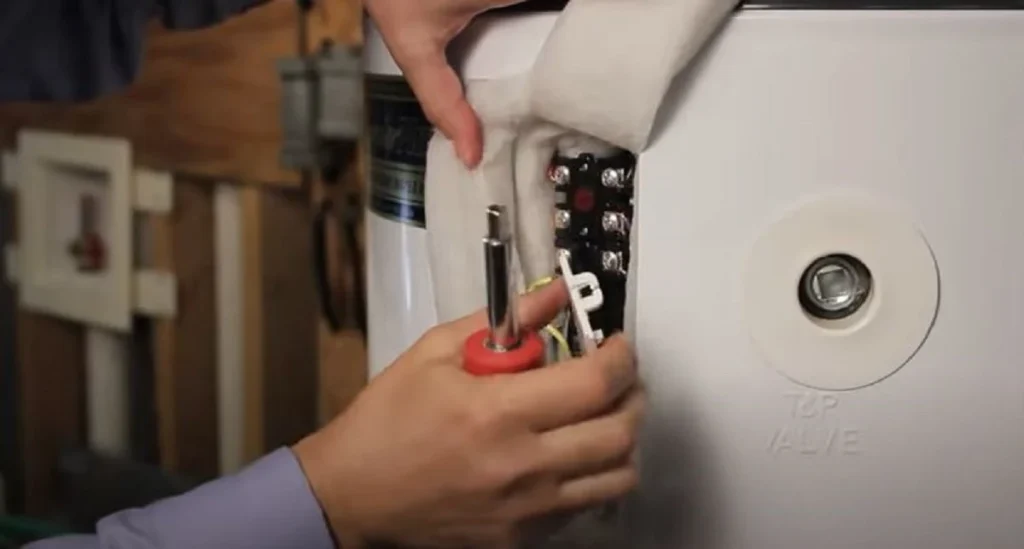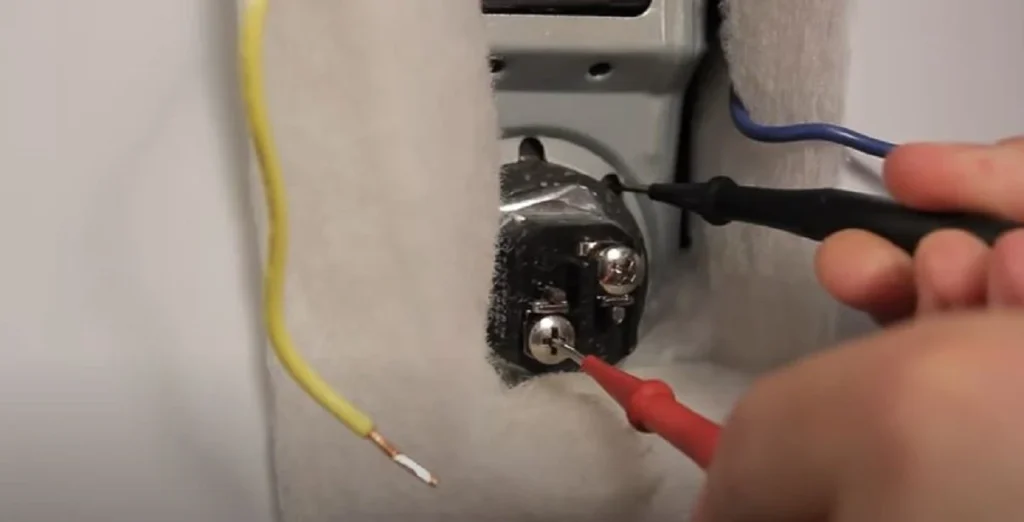Water Heater Reset Button Keeps Tripping: Causes & Fixes
The frequent tripping of a water heater’s reset button is often an indicator of underlying issues such as a faulty thermostat, a malfunctioning heating element, or electrical problems. This safety mechanism, designed to prevent overheating, can be triggered by various faults within the system.
One primary cause of the reset button tripping is a malfunctioning thermostat. This component regulates the water temperature and, if defective, can cause the water to overheat or heat inconsistently, leading to the tripping of the reset button. Another common issue is a worn-out or broken heating element. This problem often results in the water heater working less efficiently, as the damaged element struggles to heat the water to the desired temperature. In electric water heaters, such as those made by AO Smith, a frequent tripping reset button could signal a problem with the heating element or the thermostat.
Electrical issues can also cause the reset button to trip. Loose wiring or a bad breaker in the water heater’s circuit can disrupt the power flow, causing safety mechanisms to activate. In gas water heaters, issues like a faulty gas control valve or thermocouple can lead to the reset button tripping.
When dealing with these issues, it’s crucial to approach them with safety in mind. Disconnecting all wires and inspecting the heating elements and thermostats can help identify the problem. In many cases, resetting the button on the Emergency Cut Off (ECO), usually located on the upper thermostat, can temporarily resolve the issue.
However, persistent tripping is a sign that professional inspection and repair might be necessary to ensure the safe and efficient operation of your water heater.
5 Reasons of Water Heater Reset Button Keeps Tripping and Their Fixes
Water heaters are essential in our daily lives, providing the comfort of hot water. However, they can experience issues, such as the reset button frequently tripping, which can be both inconvenient and indicative of more significant problems.
1. Faulty Thermostat Leading to Overheating
The thermostat in a water heater plays a crucial role in regulating the water temperature. A malfunctioning thermostat can cause the water to overheat, triggering the reset button as a safety measure. This happens when the thermostat fails to switch off the heating element, causing the water temperature to rise beyond the set limit.
To address this, first, ensure that the power supply to the water heater is turned off. Then, access the thermostat and test it using a multimeter to check for continuity. If the thermostat shows no continuity or has visible signs of damage, it should be replaced. Carefully install a new thermostat, ensuring it is securely attached and set to the correct temperature.
2. Heating Element Issues
Another common cause for the reset button tripping is a damaged or shorted heating element. This can happen due to sediment buildup on the elements, particularly in areas with hard water. Over time, this buildup insulates the element, causing it to overheat and trip the reset button.
To fix this issue, start by turning off the power and draining the water heater. Remove the heating elements and inspect them for any signs of damage or excessive sediment buildup. If they are coated with sediment, clean them thoroughly. If they are damaged or show signs of burning, they should be replaced. Ensure that the new elements are of the correct type and wattage for your water heater model.
3. Electrical Wiring Problems
Electrical issues such as loose connections or faulty wiring can also lead to the tripping of the reset button. These problems can cause irregular power supply and overheating, which trips the safety mechanism.
To troubleshoot, turn off the power supply and inspect the wiring connections to the water heater. Look for any loose, frayed, or damaged wires. Tighten any loose connections and replace any damaged wires. It’s also advisable to check the circuit breaker for any signs of damage or wear. If you are not confident in handling electrical components, seeking professional help is recommended.
4. High Water Pressure
Excessively high water pressure in your home can cause your water heater to work harder than necessary, leading to overheating and tripping the reset button. The ideal water pressure should be between 50-60 psi.
If it’s higher, it can be controlled by installing a pressure-reducing valve at the water’s main entry point into your home. Regularly check the water pressure using a pressure gauge and adjust the valve as needed to maintain appropriate pressure levels.
Installing an expansion tank can help alleviate pressure fluctuations that occur when water is heated.
5. Defective Reset Button
In some cases, the reset button itself might be defective. This can cause it to trip frequently without any actual overheating or malfunction in the water heater.
To diagnose this, reset the button and monitor if it trips again without a rise in the water temperature. If it does, the reset button or the high-limit switch to which it is connected may need replacement. Ensure that the power is off before attempting to replace these components.
If you are unsure about the process, it is advisable to seek help from a qualified technician to replace the faulty parts properly.

Read Also: 7 Reasons Why Water Heater Pilot Light Keeps Going Out and How to Fix Them
Thermostat Malfunctions and Water Heater Safety
The thermostat in a water heater is a pivotal component, acting as the guard of water temperature. When it malfunctions, it can cause the water heater’s reset button to trip repeatedly. This issue often arises due to the thermostat’s inability to regulate the water temperature properly, leading to overheating or inconsistent heating. Signs of a faulty thermostat include fluctuating water temperatures or a water heater that doesn’t heat at all.
Addressing thermostat issues involves first ensuring the power supply is disconnected. Testing the thermostat with a multimeter for continuity can reveal if it’s working correctly. If it shows no continuity or has visible damage, replacement is necessary. When replacing, it’s essential to select a thermostat that matches the specifications of the water heater.
After installation, setting the thermostat to the correct temperature is crucial for optimal performance.
Heating Elements: Ensuring Efficient Water Heater Operation
Heating elements are crucial for the efficient operation of water heaters. Over time, these elements can suffer from wear and tear, which can lead to the water heater’s reset button tripping. The symptoms of failing heating elements include inadequate hot water, longer heating times, or noises coming from the water heater.
When addressing issues with heating elements, it’s necessary to determine whether repair or replacement is the best course of action. Begin by turning off the power supply and draining the water heater to inspect the elements. Look for signs of sediment buildup, which can insulate the element and cause overheating. If the elements are coated with sediment, a thorough cleaning might restore their functionality.
However, if they show signs of damage such as burning or cracking, replacing them is the best option. It’s important to choose elements that are compatible with the water heater’s model and wattage requirements.

Electrical Issues and Water Heater Reset Button Activation
Electrical problems in a water heater can lead to the frequent tripping of the reset button. These issues range from wiring problems and circuit breaker faults to loose connections. Such electrical concerns not only cause the reset button to trip but also pose significant safety hazards.
To troubleshoot these electrical concerns, start by ensuring the water heater is disconnected from the power source. Inspect the wiring connections for any signs of wear, damage, or looseness. Tightening loose connections and replacing damaged wires can resolve many of these issues.
Check the condition of the circuit breaker connected to the water heater. A malfunctioning breaker can cause an irregular power supply, leading to overheating and tripping of the reset button. If the wiring and breaker appear to be in good condition, but the problem persists, it’s time to consult a professional.
A certified electrician can conduct a comprehensive inspection and perform repairs to ensure the safe and efficient operation of your water heater. Regular inspections and immediate attention to any signs of electrical issues can prevent more severe problems and ensure the longevity of your water heater.
Read More:
To see our latest posts Click Here
